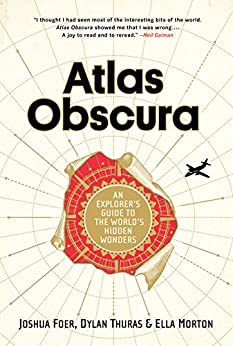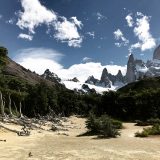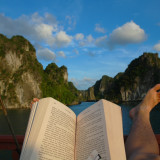3 Exhilarating Eco-Adventures in Costa Rica
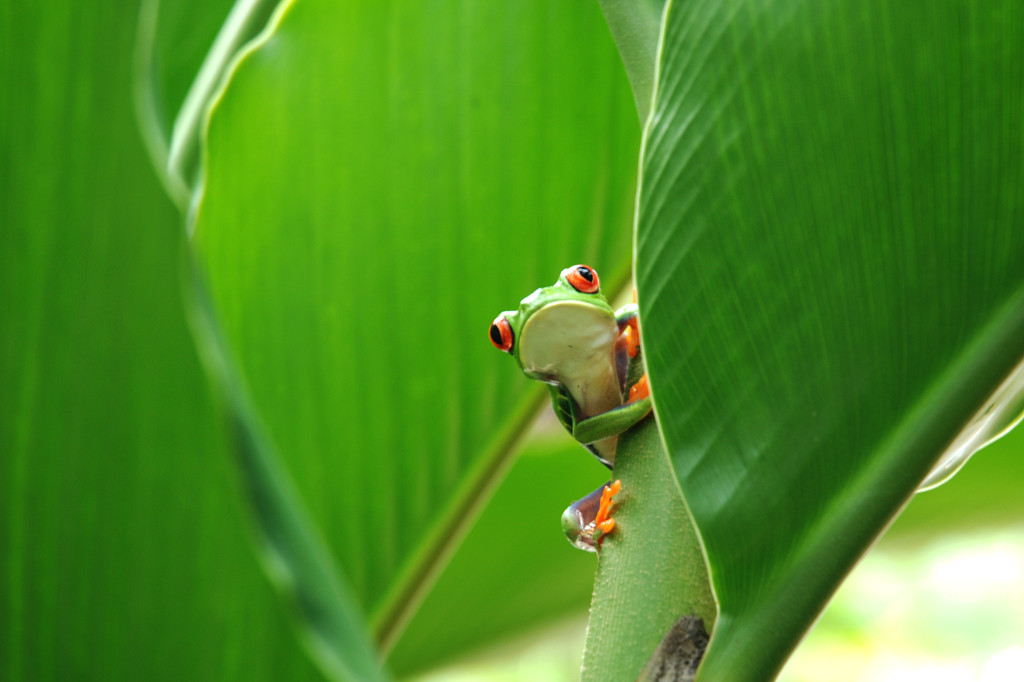
Red-eyed tree frog. Credit: Vincent Poulissen, Flickr
Seeking a warm getaway destination that has something more to offer than well-trodden Cancun or the Bahamas? Costa Rica is waiting for you. The increasingly popular ecotourism hub will satisfy your tropical cravings, with no sign of the common island-vacation question, “What do we do on the third day?”
Costa Rica has sailed relatively quietly and peacefully through history. Today it is one of only a small handful of countries in the world with no military—in fact, having a standing army is against the constitution. This peaceful tenet is radiated warmly by Costa Rica’s nationals, but you can also recognize it in the impressive economic and ecological growth the country has experienced recently. Oh, and it’s said to be home to the highest density of biodiversity in the world.
Puntarenas, the province covering most of the country’s Pacific coast, is cut off from the Central Valley by mountains. The region was once most easily reached by sea, and retains much of its quiet, rural charm.
As you make the rickety drive south, corrugated tin roof settlements give way to the lush green expanses of banana and pineapple plantations. (If you’ve never seen a pineapple plant it’s quite bizarre: one plant yields just one pineapple, sitting proudly upright in the centre as if someone had just come along and placed it there for amusement.)
Costa Rica is defined by its natural abundance, and the farther south you go in Puntarenas, the closer you get to the heart of the adventure.
Surfing
Costa Rica boasts some of the best surf spots in the world, but if you’ve never been surfing before, it offers quieter spots on the Pacific coast to—excuse the terrible pun—get your feet wet. I visited the humble little town of Dominical, about halfway down the country’s Pacific coast. Here the water is a blissful temperature, the waves are more forgiving, and there are few other surfers to collide with.
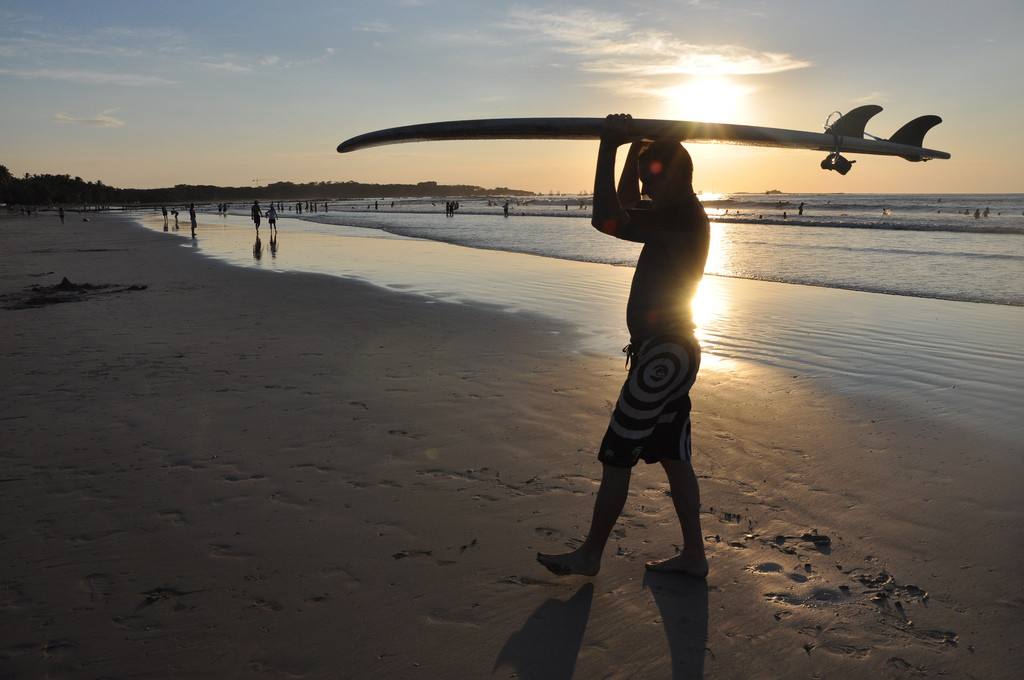
Tamarindo, Costa Rica. Credit: Mike Vondran, Flickr
I booked a surprisingly cheap ($40 for 2 hours) two-person group lesson with a local surf instructor from Dominical Surf Adventures who had me standing up on the board within half an hour! His non-judgmental patience and kindness, traits that seem to be typical of ticos (Costa Rican natives) put me totally at ease. The exhilaration of gliding weightlessly over the water is one I won’t soon forget. Dominical Surf Adventures also offers rafting trips and kayak tours.
For the more experienced there are many top-notch surfing destinations on the Pacific coast, including the world-renowned Tamarindo, Playa Hermosa, and Pavones. Make sure you visit the local watering hole after your lesson for a glass of locally sourced guanabana juice.
Rainforest ziplining
One of the most invigorating ways to experience Costa Rica’s rich diversity of flora and fauna is from the perspective of its many winged species: ascending into the dense treetops and soaring through them on a rope. Once you get past the fact that the only thing keeping you from plummeting to the forest floor is a carabiner, it’s a great ride.
On my “Flight of the Toucan” rainforest zipline tour of national wildlife refuge Hacienda Baru, I was guided by a zipline instructor as well as a tico wildlife expert on a series of eight zipline cables. At every stop along the way we would encounter another astonishing species. I got up close and personal with everything from militaristic soldier ants to sloths to anole lizards that play dead in the palm of your hand.

Costa Rican rainforest. Credit: Alex, Flickr
Ziplining is the only way to reach some of the deeper areas of the rainforest, allowing you to get closer to some of Costa Rica’s more elusive biodiversity than would otherwise be possible on foot. The wildlife refuge also offers hiking, birdwatching, tree climbing, and a restaurant that serves up traditional Costa Rican cuisine.
Horseback riding
Horseback riding is a fun way to traverse greater distances through Costa Rica’s wild terrain to reach hidden monkey-infested outposts and picturesque waterfalls. Such was my full-day expedition with Nauyaca Waterfalls Horseback Riding Tour through the semi-mountainous landscape around Hatillo on the Pacific coast.
Whether you’re a seasoned show-jumping champion or you’ve never even touched a horse before, this outfit welcomes everyone. Exploring the wild countryside atop another living, breathing creature is a very special experience.
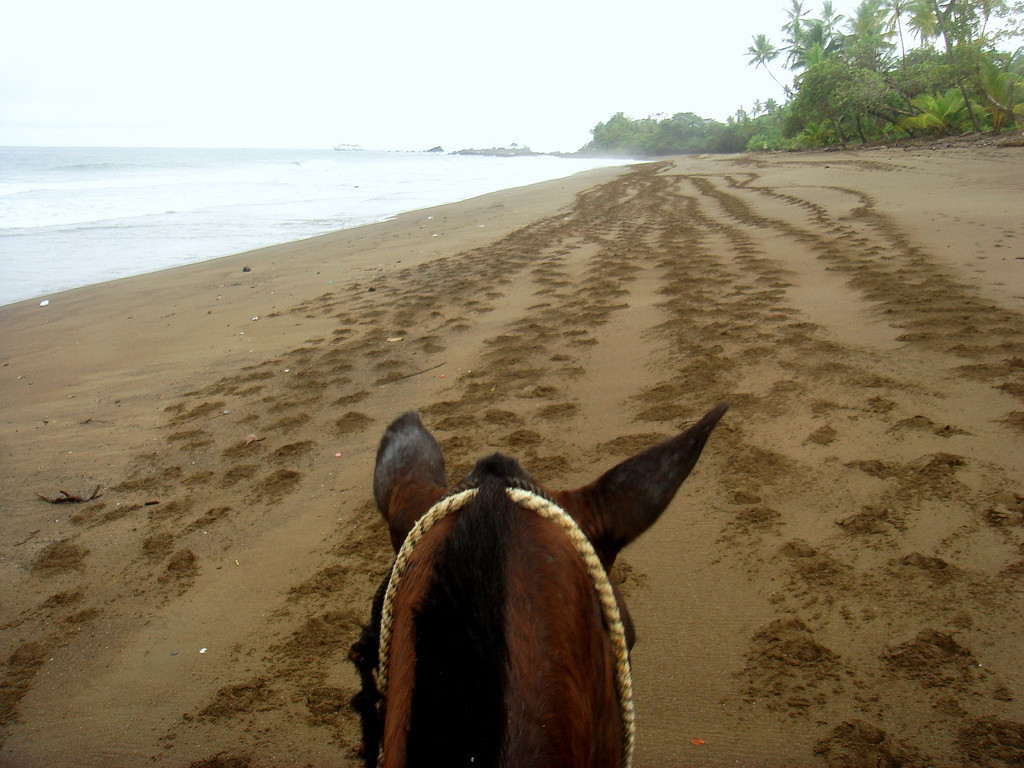
Horseback riding in Costa Rica. Credit: Scott Ableman, Flickr
Brunch is a Costa Rican staple meal of rice and beans (which together constitute a complete protein) and fresh fruit, eaten in the company of curious capuchin monkeys, one of the most intelligent New World primates. This is all topped off by a dip in a cool freshwater pool at the base of a waterfall, and if you’re brave enough, a dive off the top!
After full days of adventure the best thing to do is wind down with an outdoor yoga session, a popular activity at all the many yoga retreat eco-lodges across the country. I stayed at Albergue Alma de Hatillo, a no-nonsense eco-lodge in the heart of rural Costa Rica run by Sabina, an open-armed Polish-Canadian expat with a wealth of information and advice about what to do and see in the area.
After a week of exhilarating eco-adventures and rewarding relationships with the people who call Costa Rica home, I can see why so many Canadians choose to travel to this country and even to move here permanently. My tico surf instructor, when I asked him if he’d travelled anywhere else in the world, summed it up perfectly: “No…why would I want to leave Costa Rica?”
If You Go
Where to Stay
Albergue Alma de Hatillo
info@cabinasalma.com
011-506-8850-9034
www.cabinasalma.com
Where to Eat
La Parcela
info@laparcela.net
011-506-2787-0061
www.laparcelacr.com
For more insider tips, follow Anew Traveller on Twitter!
Nicola Brown
Latest posts by Nicola Brown (see all)
- 48 Hours In: Québec City - January 30, 2018
- Top 5 Best Travel Articles of 2017 - January 9, 2018
- 48 Hours in: Miami - December 19, 2017







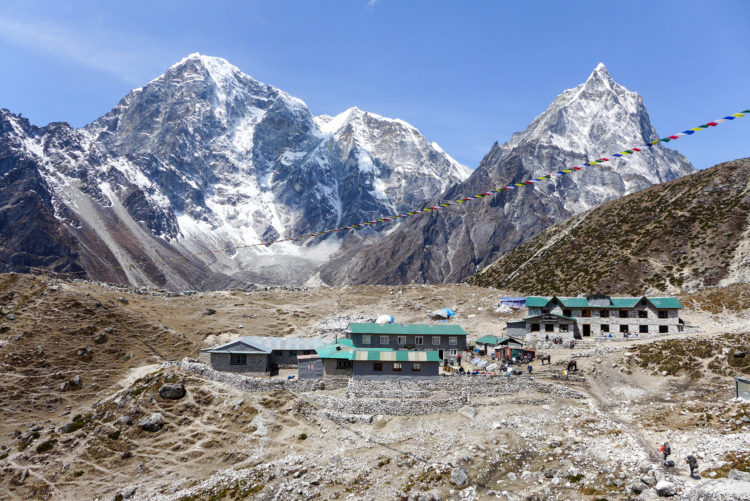 Almost all the tea houses in
Almost all the tea houses in 
